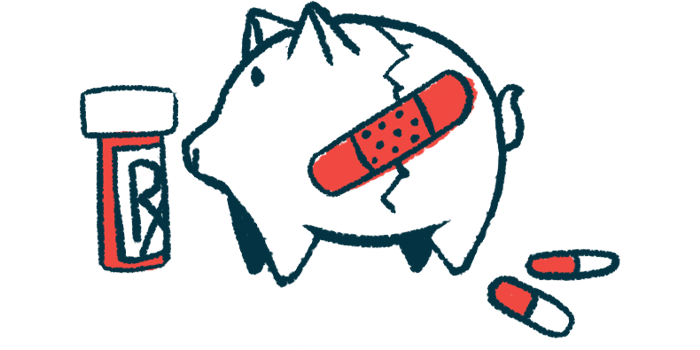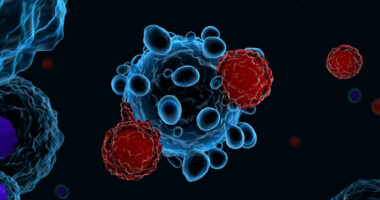Early-stage FAP brings heavy economic burden for society
Study: Patients' costs double that of carriers of disease-causing mutations

People with early-stage familial amyloid polyneuropathy (FAP) cost society more than twice as much as symptom-free carriers of disease-causing genetic mutations, largely due to higher medical needs and lost productivity at work, according to a study in Spain.
“Not only early-stage [FAP] patients, but also asymptomatic carriers, are generating a significant burden in terms of direct costs to the Spanish National Healthcare System, as well as relevant indirect societal costs,” researchers wrote.
The study, “Economic and healthcare resource utilization for hereditary transthyretin amyloidosis with polyneuropathy in Spain: real-world insights from early-stage patients and mutation carriers,” was published in Expert Review of Pharmacoeconomics & Outcomes Research.
Scarce evidence abouts FAP’s economic burden has been published
Hereditary transthyretin (ATTRv) amyloidosis is a group of diseases in which mutations in the TTR gene result in an unstable transthyretin protein that forms toxic clumps and damages the body’s tissues.
FAP is a form of ATTRv amyloidosis wherein these clumps build up in multiple peripheral nerves, or those outside the brain and spinal cord, leading to neurological symptoms that worsen over time.
People with FAP may also accumulate toxic transthyretin clumps in the heart, which can cause heart damage. When these aggregates mainly build up in the heart, the condition is called ATTRv amyloidosis with cardiomyopathy.
FAP is more common in certain regions, including Portugal, Sweden, Japan, and Spain.
“Scarce evidence about its economic burden to the society has been published, with only one study carried out in Portugal describing direct and indirect costs of [FAP] patients and mutation carriers,” the researchers wrote.
Early-stage FAP patients had significantly more medical visits
For this study, researchers in Spain looked at the yearly medical and indirect, or work-related, costs of 19 people with early-stage FAP and 86 people carrying a FAP-causing mutation, but not yet showing symptoms. The most common genetic mutation was Val30Met, the most frequent FAP-causing mutation.
All were participants of the multicenter EMPATIa study, which was designed to investigate characteristics, clinical management, and yearly costs of these two subgroups of people. The current study described the results related to costs.
More than half of asymptomatic carriers (58.2%) were active, with only 14% being retired. In comparison, most early-stage FAP patients were not working — only 26.3% were active, while 57.9% were retired. Sick leave was also more frequent among the early-stage FAP group (10.5% vs. 2.3%).
Patients had significantly more medical visits, including to neurologists, cardiologists, and emergency rooms, as well as significantly more hospital stays than asymptomatic carriers. Medical visits and hospitalizations were the main reason their medical costs were more than double those of the asymptomatic carriers.
Direct costs were the main cost component, with medical visits and hospitalization representing the largest part of the cost.
Specifically, healthcare costs per patient over the previous year were €1,370.3 (about $1,604) higher for those with early-stage FAP (€2,323.6 or about $2,720 vs. €953.3 or about $1,116).
Non-healthcare costs were also significantly higher for early-stage FAP patients compared to asymptomatic carriers (€781.3 or about $914 vs. €380.1 or about $444.7). Early-stage FAP patients also worked an average of 53.9 days per year while feeling tired or in pain, compared with 5.5 days for asymptomatic carriers.
When combining both healthcare and indirect costs, early-stage FAP patients cost society €3,105 (about $3,633.1) per patient per year, compared with €1,333.4 (about $1,560.1) for asymptomatic carriers. This €1,771.5 (about $2,072) difference corresponds to a 132.9% increase in annual costs per person.
This study shows that even in the early stages of FAP, the economic burden is significant.
“Direct costs were the main cost component, with medical visits and hospitalization representing the largest part of the cost,” the researchers wrote. “The total annual costs of ATTRv amyloidosis per patient were significantly higher in [early-stage FAP] patients compared to asymptomatic carriers and, as was expected, rather lower than in advanced stages of the disease and also lower when compared to [ATTRv amyloidosis with cardiomyopathy].”
Early diagnosis and timely treatment of FAP could reduce long-term costs and improve quality of life for these patients. This “would facilitate a prompt medical intervention which would not only translate into better clinical control, but would also delay the cost of the disease to both the [national health system] and society,” the team concluded.








